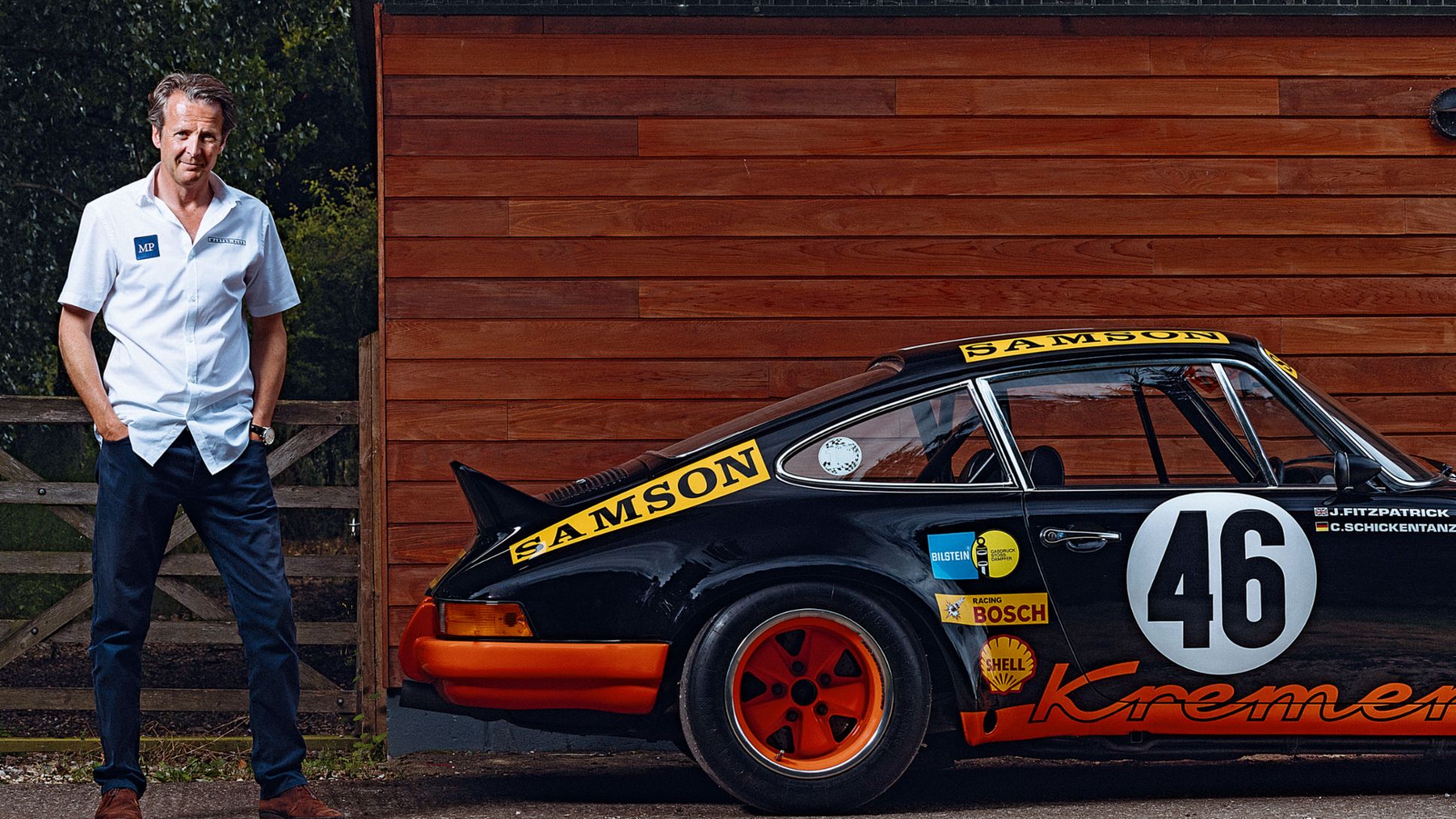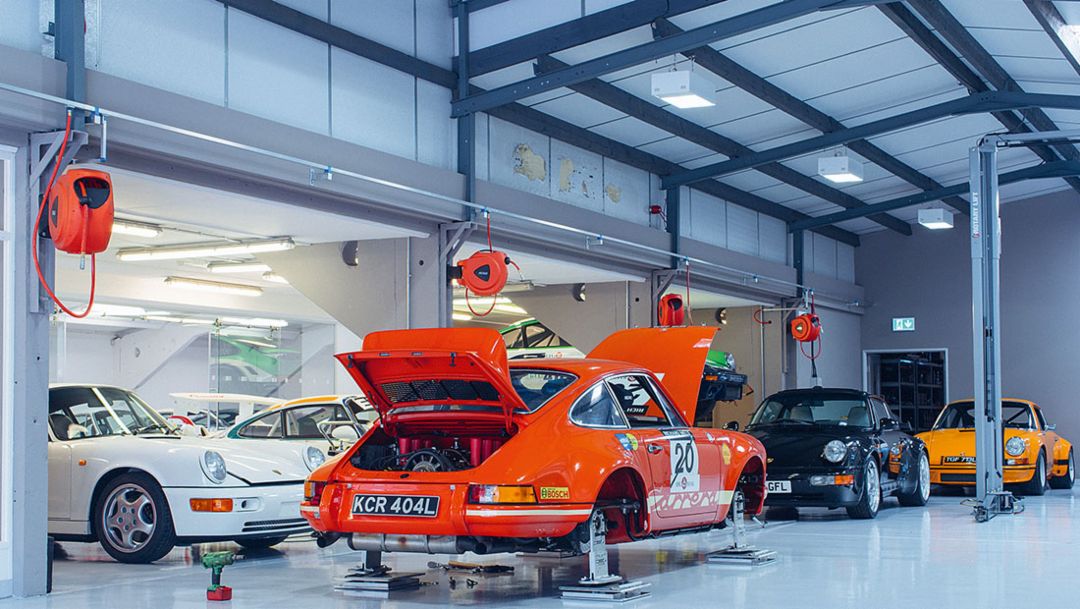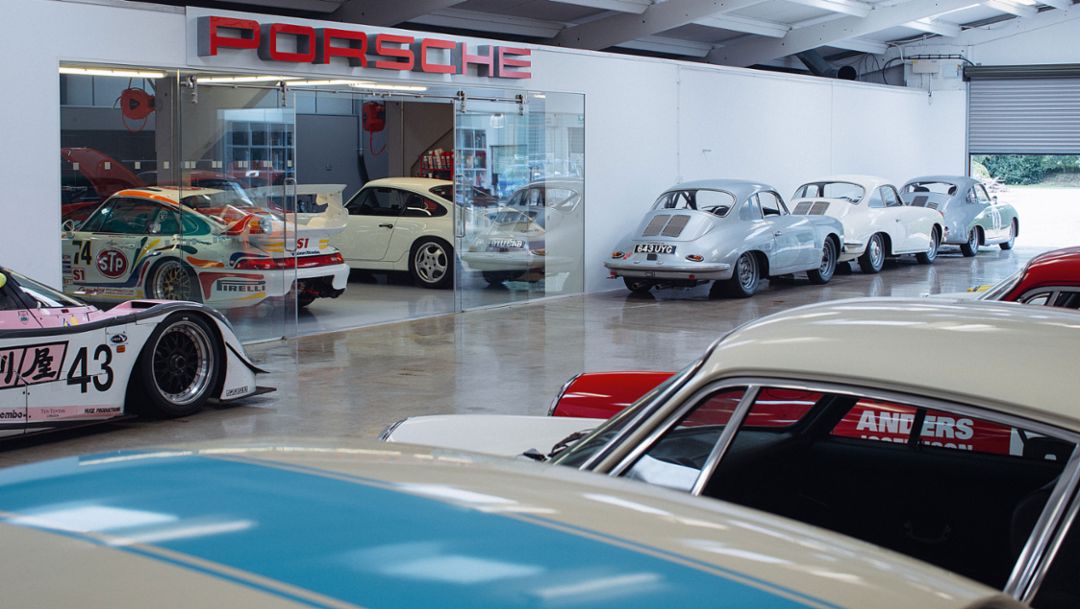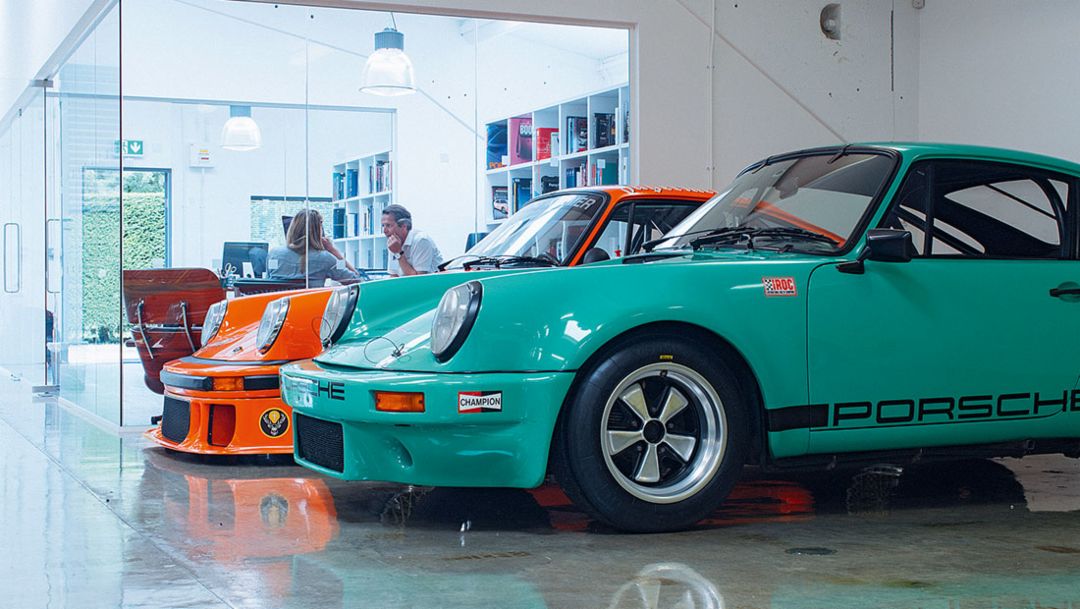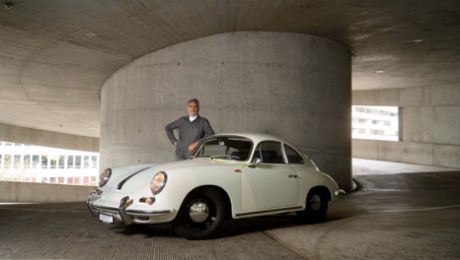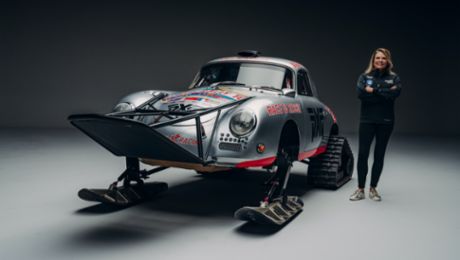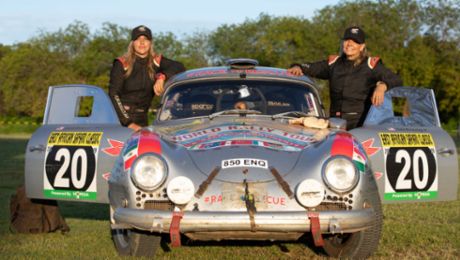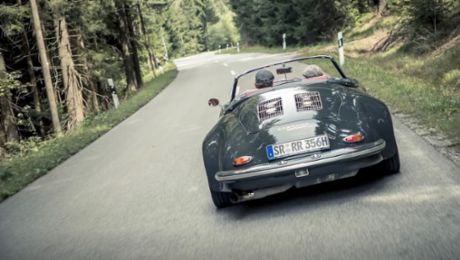A dusty country road somewhere in North Essex. On the left and right, sun-lit fields as far as the eye can see. Before us, a faded wooden fence with a lone letterbox. On it stands in simple hand-written letters a name: Lee Maxted-Page. Here, we should be able to find some of the rarest Porsche treasures in the British Isles. It is hard to imagine that the piece of land just beyond – a simple farm with paddocks, tractors, mowers and chickens – hides assets made of metal running into the millions. We’re excited to find out more.
Lee Maxted-Page is a slim, cautious-looking man. “Understated” not only describes his appearance; it is the motto for his whole business. “We like to keep things inconspicuous,” he says, having purchased the little farm near Stansted Airport over 15 years ago and made it into one of the top ports of call for Porsche collectors around the world. The classic “barn find” reinterpreted: As he opens the doors to one of the three storage facilities next to the paddocks, the gleam of half a century of Porsche shines out from inside.
Early 356s stand carefully lined up on white tiles
The sight is reminiscent of Q’s secret laboratory in the James Bond films. Under the glistening light of neon strip lights they stand carefully lined up on white tiles: early 356s that look as though they have just rolled off the production line. Flawless Group C Porsches. Three-litre Carreras from the International Race of Champions, of which only 15 were ever made in 1973, along with some no-less-sought-after 2.7 911s. One of the popular 934 Jägermeister Kremer RSR models from the legendary Group 4. Living history breathing right in front of us, still smelling of sweat, oil and yearning. Memories which seem like they could never be bought. But they can. We rub the dust from the country road from our eyes in disbelief.
Cup of tea? Certainly. First, let’s have a seat. Lee Maxted-Page’s office is ultra-modern and full of glass. Behind him there are several bookshelves full of specialist literature reaching up to the ceiling. Your gaze is constantly directed to around 20 vehicles which are currently in his hands for sale, restoration and maintenance. It is in here, where nothing has the feel of a barn any more, that Lee sits down opposite the Aga Khans of this world. His clientèle extends from European royalty to British pop stars.
“I have always driven 911s, ever since I was 20 years old”
Ten years ago, when Lee decided to specialise exclusively in dealing in historic Porsche vehicles, this was a gap in the market. For the passionate car dealer, it was not only a business decision. “I have always driven 911s, ever since I was 20 years old. Once you've experienced an air-cooled Porsche, there is no going back,” he says. Specialising in rare racing vehicles was similarly a decision born of enthusiasm. Many of the original works vehicles have already found their way to the dreamlike farm in Essex, including more than a few Martini racing cars, such as the world-famous Chassis R6, winner of the Targa Florio in 1973.
A crucial year for Lee Maxted-Page in any case. Over the years, no dealer in the world has sold more 1973 2.7 Carreras as he has. Currently, he has a 2.8 RSR on sale for almost three million pounds. The legendary Samson Kremer racer earned its place in the brand history in 1973 as winner of the European GT Championship. Behind the wheel was Clemens Schickentanz, for whom it would be the greatest triumph of his career. The RSR also took part twice in the 24 Hours of Le Mans and was immortalised on the official racing poster by the graphic artist Erich Strenger. Lee Maxted-Page knows the history of each his vehicles by heart. It is an absolute requirement for business in the vintage car trade. But so is passion. “Sometimes it is hard to let go of the cars. They are like members of the family. That’s why we are so happy when they make their way back to us.” Lately, his interest has been focused on the Group C vehicles, of which he currently has three on offer. “They are getting a lot of interest just now from people who take part in vintage races. At the moment, they are still relatively cheap, but in a few years we’re going to look back and realise they’ve become exorbitant,” says Lee, and you get the sense that he has a fair bit of skill in selling.
A loud orange-coloured 911 2.8 RSR on the lifting platform
It is no wonder that stars like Take That singer Howard Donald and the car-mad Jamiroquai frontman Jay Kay buy their cars from him. Lee himself often races with Howard Donald, and Jay Kay has become a personal friend to whom he has already sold several vehicles which also appear in the videos of the British superstar. His last acquisition from Maxted-Page, an aubergine-coloured Carrera RS 2.7, could recently be seen in the music video to Jamiroquai’s latest single “Lifeline”. In it the musician drives his car around the world and runs his hand gently over its roof. A loud orange-coloured 911 2.8 RSR is currently being positioned on the lifting platform and will be picked up by Liam Howlett from The Prodigy tomorrow. “Musicians seem to love the sound of old Porsches,” says Lee. “Perhaps the noise of the engines appeals to them.”
As well as trading and restoration, storing and preparing vehicles for racing is another key area for Maxted-Page’s six-person team. Often genuine parts are located in a painstaking, arduous process, old racing vehicles are trimmed back to fit historic FIA specifications, engines are dismantled and assembled anew. In this world, restoration and conservation are two entirely different things. As in many fields of value preservation, there is an increasing emphasis on conservation in the automotive industry; a car is not necessarily restored to an as-new original condition, but rather lovingly reworked so that the traces of times past remain visible.
A two-litre racing engine from 1965 is jacked up almost as if it were on exhibition
“The market is developing, and customers are getting more demanding. The original condition is therefore more sought-after than restoration.” With Maxted-Page, everything is done in-house, apart from heavy paintwork and metalwork. The engine and transmission workshops of the family business appear as clinically precise and flawless as the rest of the site. The drawers containing all the screws and tools are meticulously labelled and sorted. In the middle of the room, a two-litre racing engine from 1965 is jacked up almost as if it were on exhibition, just waiting for the carburettor. In this case, a small, but costly detail. Rare parts such as the 1966 Solex carburettor can rarely be obtained for less than 10,000 dollars. Still Lee Maxted-Page is convinced: “Restoring a car like this is an investment, not an expense.”
It sometimes happens that Maxted-Page lends some of his rare specimens to the Porsche Museum and other institutions, as they are unique across the world. When the then still unknown Porsche dealer went to Stuttgart for the first time, people could hardly believe their ears when the Briton told them what rare pieces he had in stock at home. Lee smiles mischievously and gets to his feet. Carrying his tea, he leads us into the nearest barn. Here, too, a simple gate that he opens with a sweeping motion. As the neon tubes flicker to life with an audible hum, illuminating the furthest corners, the petrol running in our veins turns cold despite the summer temperatures.
Covered by pristine cloths, the silhouettes of even more great Porsche icons of the past gradually emerge. This is where Lee stores the treasures of his best customers, a private collection. One cloth is swept away to reveal the striking front headlights of a red and white 917 K. The car which first took the overall victory at Le Mans for Porsche in 1970. Chassis number 917-023. While we are still picking our jaws back up from the floor, Lee gives a mischievous smile. “When we were invited to Porsche, a model of this vehicle stood on the shelf in the meeting room in Stuttgart. We said: ‘We’ve got this car.’ – ‘You mean, a model of it?’ – ‘No, the original.’”
Info
Text first published in the magazine "Porsche Klassik 10".
Text by Lena Siep // Photos by Patrick Gosling
Copyright: The image and sound published here is copyright by Dr. Ing. h.c. F. Porsche AG, Germany or other individuals. It is not to be reproduced wholly or in part without prior written permission of Dr. Ing. h.c. F. Porsche AG. Please contact newsroom@porsche.com for further information.
